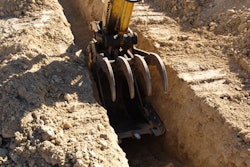
As if construction work wasn’t dangerous enough, the use of job-made boxes, baskets and platforms increase fall-related risks and crush injuries inherent in the industry.
Typically, these poorly constructed devices are used to lift workers, materials and/or equipment to elevated locations. In many cases, these makeshift platforms are constructed with three-side walls affixed to a bottom stage made of either wood, metal or plastic.
Workers will either step onto the platform individually, as a group, or will load the device with materials or tools needed for use at elevated locations. The “box” is often hoisted by industrial trucks, forklifts and/or similar equipment.
Unfortunately, these devices are prime causes of injury for constructions workers, who either fall or get struck (or crushed) by falling debris. Due to the heights involved, injuries are often severe, so the use of these devices should be avoided at all costs. These devices are often created on-the-fly by unqualified construction workers without input from industry standards or oversight from engineering professionals.
These injuries have become so prevalent, that OSHA has investigated their frequency, and in the 18-year span from 2002 to 2020, it found 57 reported incidents involving these types of platforms. In 57 incidents, 46 workers suffered serious injuries, and 33 died. As a result, a new OSHA Safety and Health Information Bulletin (SHIB 06-03-2021) addresses the hazards of job-made boxes. It reminds employers and workers about the hazards of makeshift job-made boxes and platforms for fork trucks.
Since these boxes and platforms aren’t constructed by the original manufacturer, they’re not load tested or stability tested. People who use these attachments underestimate their structural integrity. Workers may fall off poorly secured platforms or be struck by materials that fall through the bottom of boxes not built strong enough to support the weight. Furthermore, they’re considered “modifications, additions or alterations,” and are not permitted under the provisions of 29 CFR 1910.178. OSHA has provided guidelines to follow in this area:
- Employees should not be allowed to use unapproved job-made boxes for lifting workers, materials or equipment.
- Employers can use commercially available boxes, baskets, and platforms that are approved for that brand or type of powered industrial truck in use.
- It’s essential to know what equipment is interchangeable and what isn’t.
- Employers must always protect workers at height with proper fall protection equipment
Fall safety equipment should include: Harness and lanyard combos, individual harnesses, individual lanyards, roofer’s kits, general kits, self-retracting lifelines, anchorage connectors and devices and approved fall protection systems. These are the best protectors from construction-related accidents.
Employers should inform employees not to use unapproved job-made boxes on worksites. When workers require such devices, they should utilize commercially available boxes, baskets and platforms in compliance with OSHA standards. Further, employers are required to train workers on the safe use of any such devices and any recommended safe practices of the equipment, in accordance with manufacturers' recommendations. These protocols will assist in protecting personnel and objects from falling, thereby minimizing injuries inherent in a very dangerous field.
Howard Frederick is an attorney at The Platta Law Firm in New York City.











